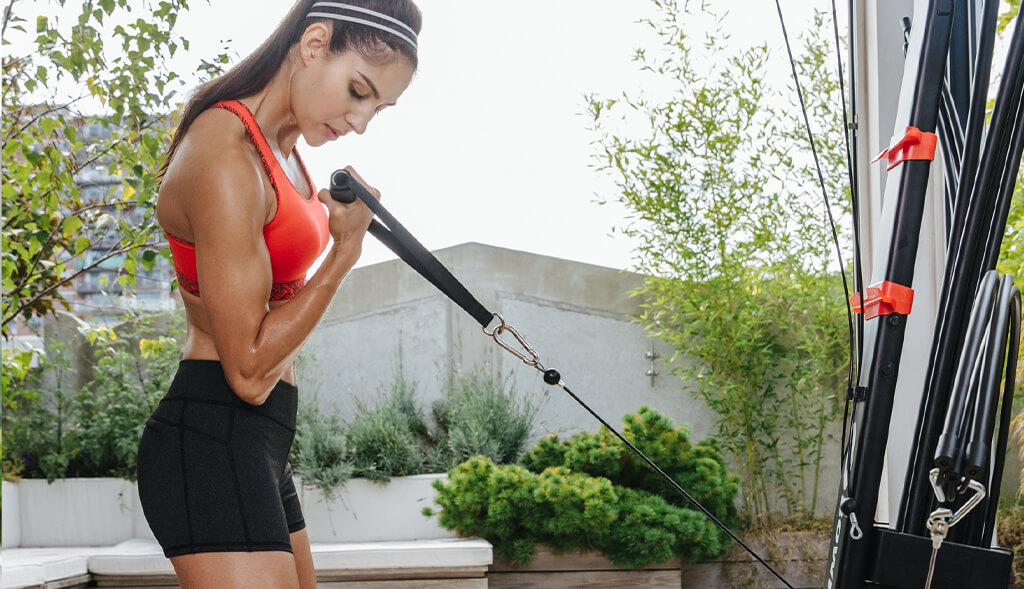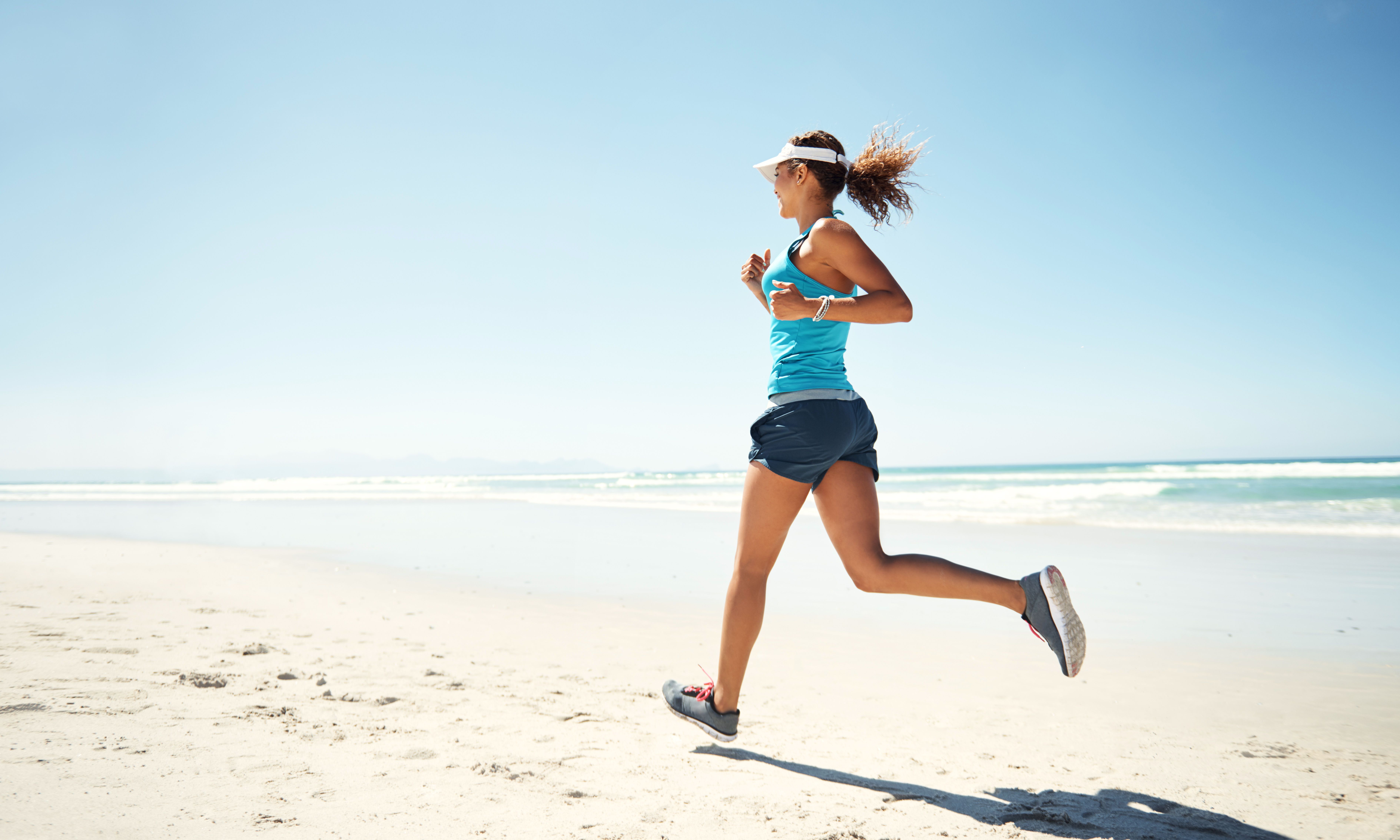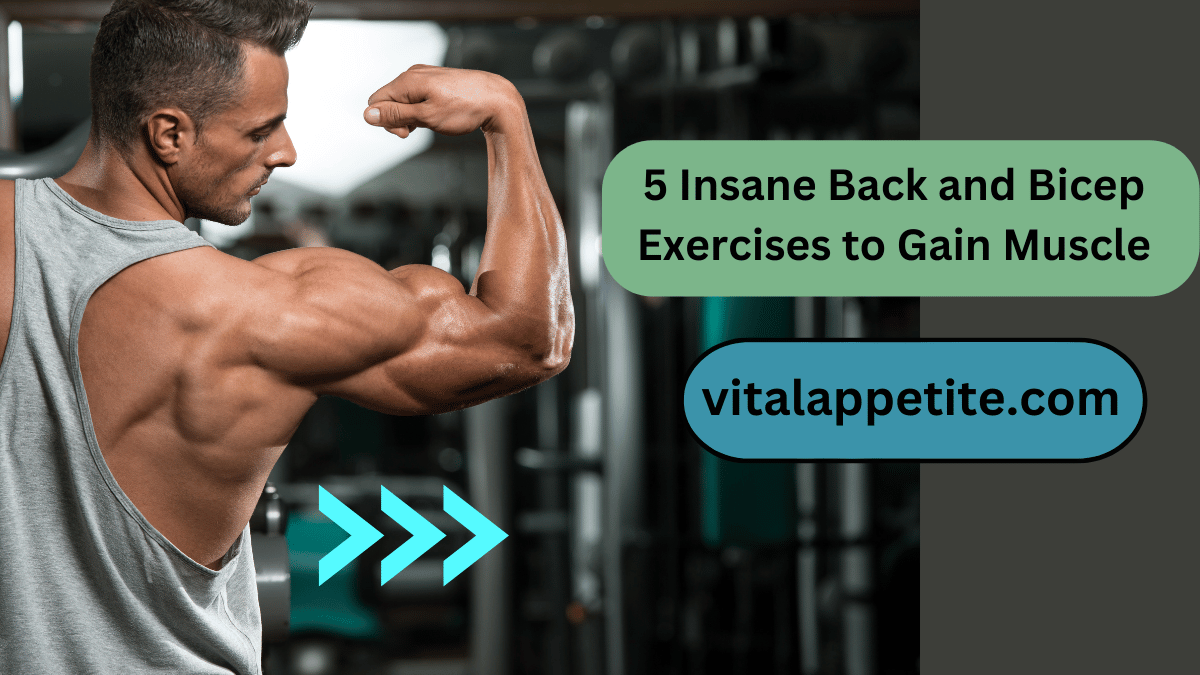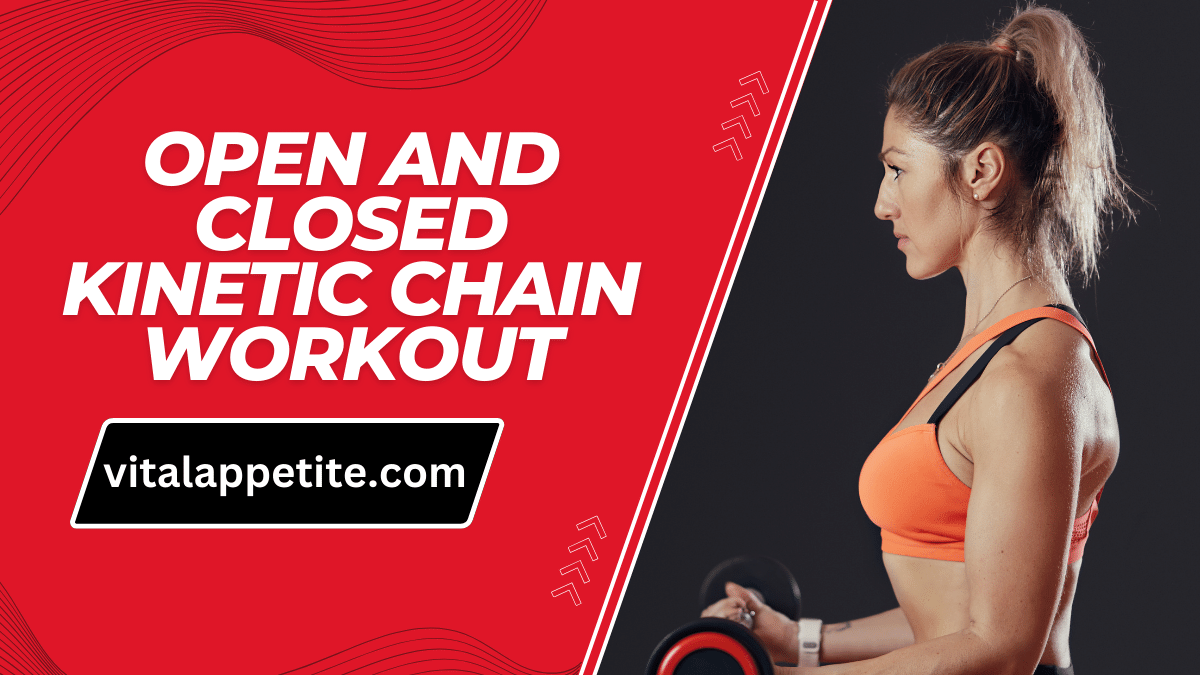We try to pay our respects to the iron temple on a regular basis, but occasionally things get in the way. Maybe your vehicle broke down, the busses aren't running, or you just don't want to leave the home that day. Perhaps there is a quarantine.
Whatever the cause, having a backup fitness plan that you can perform from home is beneficial.
Home workouts, particularly calisthenics, may be as effective and provide distinct advantages. Many individuals swear by bodyweight exercises, which have been employed in workouts since ancient Greek warriors marched into battle. However, sometimes you need that additional edge, or tension, to truly drive your progress into high gear.
It might be as easy as a resistance band and a kettlebell, but if you're serious about working out at home, you'll want something more substantial. For example, consider a Bowflex machine.
Even the best tools are worthless in the hands of a novice. This is why we've put up a wonderful training regimen for you that will make the most of the advantages of having a Bowflex.
What's the deal with Bowflex?
Bowflex has grown from its modest origins in 1986 to become a dominant force in the fitness equipment industry. While the brand has expanded into a variety of products, including adjustable dumbbells, kettlebells, cardio machines, and activity trackers, its name is still associated with some of the greatest home gym devices on the market.
As previously said, Bowflex currently provides a variety of fitness aids and exercise equipment that may be used for circuit training, weight resistance training, or weight resistance training.
Home gym equipment offers up to 100 customizable workouts to help create a healthy physique. However, for those who are unsure of their objectives, this might be overwhelming. Preventing us from committing to one thing. Hopefully, the training plan below can remove some of the cobwebs.
Benefits of the Bowflex Home Gym

What distinguishes the Bowflex method is that it was the first to employ rods to maintain continuous tension throughout the action. What exactly does this mean?
You've surely observed in regular weightlifting that certain movements are simpler than others. For example, it may be tough to begin lifting the bar in a bench press, but it becomes substantially easier the farther you press it above you. This is because the action and angle need additional muscular engagement.
Research indicates that time spent under strain is crucial for muscle growth, even at lower weights. Weightlifters might employ strategies to enhance their duration under strain. For example, spend less time in the lockout (the easiest phase of the lift) and concentrate on the eccentric action (the movement during the lift's descent).
The Bowflex system, like resistance bands, takes use of the unique advantages of exercising under continual strain.
Furthermore, the system applies less force at the start of each exercise, gradually increasing resistance as the activity goes. This significantly minimizes stress on joints and tendons while providing the same advantages as conventional weightlifting. Not to mention the increased muscle growth that results from spending more time under strain.
If you're ready to take on the home gym world with Bowflex, try the training program below to optimize your results.
- Back and Bicep Workouts For Building Muscle
- How often should Jeff Nippard train abs?
- Top Best Winter Workouts to Count Down to the Holidays
- 10 Best Chest Exercises for 2024
- The Hyrox Workout Simulation You Can Do in Any Gym
A FULL-BODY BOWFLEX WORKOUT.
The program below is designed for a two-day full-body split. Every day is repeated twice a week. For example, you may perform exercise 1 on Monday, 2 on Tuesday, 1 on Thursday, and 2 on Friday. This leaves you with the weekend and Wednesday as relaxation days.
While some bodily parts are the same or comparable, each day will concentrate on a new area of the body, particularly the bigger ones. For example, one day will concentrate on the chest and the next on the back. The same holds true for leg and core exercises, which are scheduled on various days.
While you will hit some of the same body regions on each days, the focus of the exercise will be on a different section of the body. As an example, consider triceps vs biceps in the arm. Or front delts vs. rear delts.
We've given some suggested sets and rep counts, but it all depends on your objectives. Whether it is endurance, hypertrophy, strength, or just total body conditioning.
BENCH PRESS.
There's a reason why the bench press reigns supreme among upper-body workouts. It remains one of the most reliable indicators of upper-body strength, particularly chest strength. In addition to the pecs, the bench press will tone and develop muscle in your arms and front deltoids.
It not only improves upper body strength but also physical endurance. Any pressing action, whether in the gym or outdoors in normal life, will benefit from bench press training. Not to add, those enormous pecs look great.
SHOULDER PRESS.
As the name implies, the shoulder press focuses on the shoulders. The shoulder press focuses on the anterior deltoids, which are located at the front of the torso. While many upper body weight lifting techniques develop the front delts, focusing on them can help you improve your other upper body lifts.
Your delts, pecs, triceps, and traps will all reward you. The standing variant also strengthens your core, which is required to maintain balance. However, if you opt to sit, you will better activate your arms (specifically, your triceps).
TRICEP EXTENSION.
The tricep extension is one of the most effective exercises for working the triceps.
While everyone wants large arms, the emphasis is always on the biceps—but the triceps are just as vital. Strong triceps may also help you perform better on exercises like the bench press and pull-ups.
Furthermore, strong triceps serve to support your shoulder joints and are an important component in various functional fitness exercises. Basketball, volleyball, and tennis are good examples of this.
FRENCH PRESS
The French press is another terrific tricep workout, but it has its own unique characteristics that make it an ideal companion to the tricep extension.
If you want to increase arm size, you should workout both the triceps and the biceps. However, we may go a step farther by stimulating specific muscle fibers.
The triceps are made up of three heads, the longest of which is most essential in terms of perceived muscle size. Tricep extensions train all three heads, but they focus on the two shorter ones. The French press has the advantage of increasing the pressure on the long head of the tricep, resulting in highly well-rounded arms.
- Time Under Tension Workouts: Are They More Effective?
- Is it too late to start weight training at 50?
- Best exercises for 'bingo wings', and what actually causes them
- Types of Cardio Workouts For Fat Loss
LEG PRESS
The leg push is one of the most effective all-around lower body leg workouts. It targets the quadriceps, hamstrings, and glutes, which are already among the largest muscles in the body.
While leg day is often overlooked, well-built legs look great on everyone and may provide greater practical fitness advantages than upper body strength. Adding the leg press to your training routine might help you run faster on the treadmill or improve your vertical jump for pickup basketball.
Not to mention that it is quite simple to accomplish. While some individuals may be daunted by the complexities of proper squat form, the leg press stands its own and provides equal advantages.
LEG CURL
While the leg press focuses on the quadriceps, leg curls are excellent for isolating the hamstrings and increasing their strength and flexibility. Strong and flexible hamstrings lead to increased overall strength, balance, and endurance. They will also aid you with your primary compound motions.
Hamstrings are more difficult to train than quadriceps, for example, since complex motions often depend on knee flexion, which is less effective at engaging the hamstrings. Leg curls guarantee that your exercises include a high amount of hamstring activation.
LAT ROWS.
This day's workout will concentrate on the back rather than the chest, so we'll begin with the lat row.
Lat rows are an excellent pulling exercise that not only works the lats but also the biceps and triceps. The last two act as stabilizing muscles in this action. A strong back is necessary for balancing a muscular chest. While the latter may seem more remarkable than the former, if the exercises are not balanced, your posture will become more rounded.
This is a functional workout since you will use the same muscle groups while pulling something towards your chest. It's also an excellent approach to educate how to engage your glutes and core for stability, which you need while squatting or deadlifting.
CLOSE GRIP LAT PULLDOWNS.
Similar to the exercise above, lat pulldowns mainly activate the middle back (lats) and core. While the emphasis is on the middle back, lat pulldowns benefit the whole back.
The tight vs. broad grasp is another crucial factor. A broader hold, similar to pull-ups, engages more of your back and lats than a small grip. However, since lat rows occurred before this exercise, you do not need to focus the lats as much as you would normally.
Using a tighter grip allows your biceps to take on more of the strain, which is ideal for us because today is also bicep day.
REAR DELT ROWS.
Today's emphasis will be on the back delts, as opposed to the front delts from the day before.
The rear delts are an often disregarded muscle because there’s not much of a “wow” element to them, but they absolutely pull their weight when it comes to having a stronger total upper body and a better posture. Overtraining your chest (and, by extension, the front delts) while ignoring the rear delts might result in a rounded posture that does not look good.
With this motion, use a broader elbow posture to activate your rear delts, traps, and upper back more fully.
REVERSE GRIP BICEP CURLS.
Despite the similarity in name, this exercise receives much less attention than its more popular cousin above.
region of the reason is because it accentuates a region of the bicep that is not visible but is nonetheless crucial in linking the upper arm and forearm. This activity will result in increased grip strength, a stronger overall arm structure, and relief from elbow discomfort if there is an imbalance between the flexor and extensor muscles.
BACK EXTENSION.
While this day focuses on the core, some of us may be surprised that it starts with a back workout.
A strong core goes much beyond simply the abs. It also contains your lower back muscles (in addition to the other lower body muscles that comprise the core). These muscles are critical for spinal stabilization and posture improvement, which will become more important as people age.
In terms of usefulness, a strong lower back allows you to bend forward, turn to the side, and lift objects off the ground.
RESISTED CRUNCH
If you want a 6-pack, resistant crunches are a good option for achieving that chiseled appearance.
While normal crunches are enough to stress the core, adding resistance increases your improvements even more. Establishing a solid core is crucial. It is either necessary or highly crucial in practically every full-body exercise, and exercising it has significant cardiovascular advantages.
Use a resistance cable on just one side of the workout to activate the obliques, giving it a unique twist (literally).







